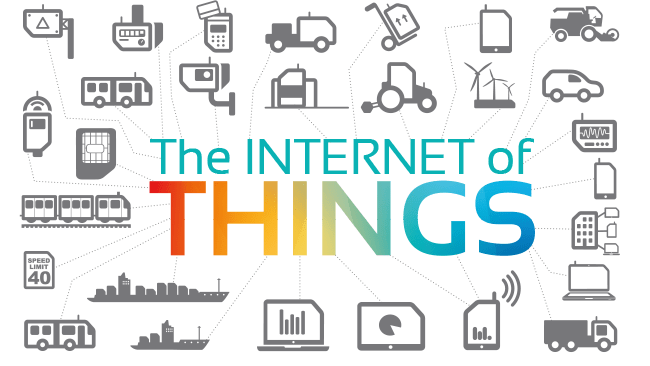 It is not a secret that the Internet of Things (IoT) is one of the most promising and fast-moving technologies, and experts say that this technology has a great future, and that will make a significant contribution to the development of humanity.
It is not a secret that the Internet of Things (IoT) is one of the most promising and fast-moving technologies, and experts say that this technology has a great future, and that will make a significant contribution to the development of humanity.Internet of Things technology has emerged in order to improve people’s living standards. The Internet of Things is directly related to life, it allows us to save money and improve the safety of our lives. The main goal of IoT for consumers is to create comfortable conditions for a person, and only after that to save and reduce costs. Based on IoT, household appliances, heating and lighting systems, air conditioners, door locks,
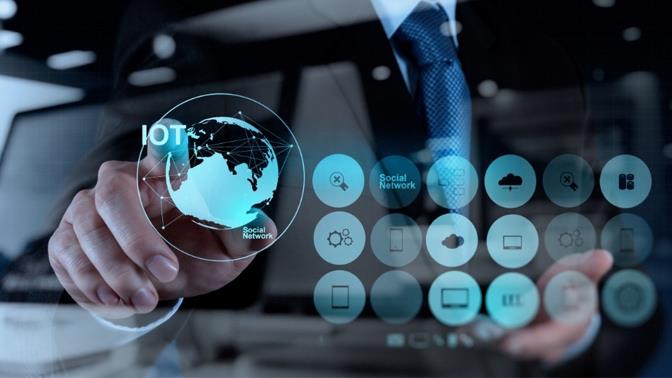 video surveillance, as well as automatic irrigation systems of the adjacent area work.
video surveillance, as well as automatic irrigation systems of the adjacent area work.Thanks to the introduction of IoT technology, the possibilities of optimizing energy consumption have expanded. All costs can be monitored and optimized. The industrial Internet of Things goal is to increase the productivity of enterprise processes by optimizing energy consumption. Internet of Things technology is used in various industries. As part of this technology, the workings of manufacturing mechanisms and systems are constantly monitored by sensors, allowing for efficient process management and responsiveness to different situations.
According to some reports made by the largest analytical agencies, the volume of the global IoT market in 2017 amounted to about 160-180 billion dollars. Experts predict an increase in the global market of over 1 trillion dollars by 2020 and up to $ 4.3 billion by the end of 2024. At the same time, the number of Internet of Things devices will increase to 50 billion – they are mainly sensors.
But the location of sensors in the territory is not enough. The value itself is the data that these sensors can transmit to the server for processing, analysis, and decision-making. And this requires inexpensive and reliable communication channels that can collect information from thousands of sensors.
For many years, the enormous potential of the Internet of Things (IoT) has been constrained by technical problems such as the short life of battery-powered devices, the short distance of communication and the high cost.
 The technology, called LoRa (Long Range), is a Semtech-patented technology and method of the same name, which allows to overcome all these obstacles. Based on the new specification and the new LoRaWAN (Long Range Wide-Area Network) protocol, which uses an unlimited range of frequencies, LoRaWAN technology allows remote sensors to be connected while offering optimum battery life for sensors and minimum infrastructure requirements.
The technology, called LoRa (Long Range), is a Semtech-patented technology and method of the same name, which allows to overcome all these obstacles. Based on the new specification and the new LoRaWAN (Long Range Wide-Area Network) protocol, which uses an unlimited range of frequencies, LoRaWAN technology allows remote sensors to be connected while offering optimum battery life for sensors and minimum infrastructure requirements.How does all this work?
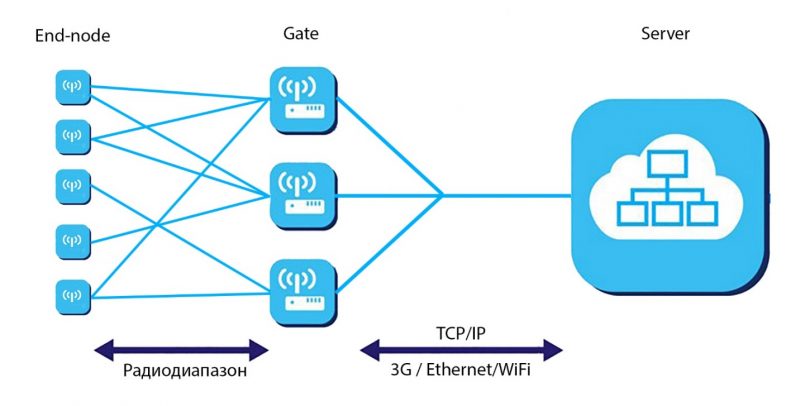
End nodes are the final nodes of the network (sensors or actuators). They are able to communicate with the gateway on a radio channel.
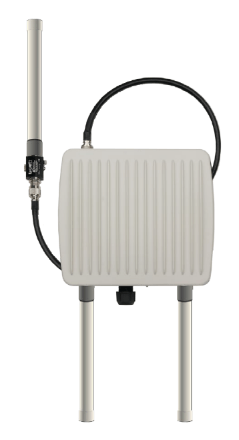
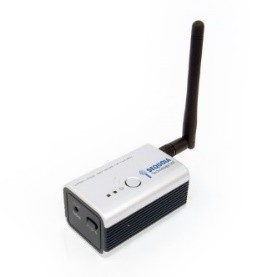
Gates are multi-channel and multi-modem transceivers that are capable of simultaneously demodulating multiple channels and even simultaneously demodulating multiple signals on the same channel. These gateways use other RF components than those used in End nodes to provide high-capacity networks. Gates serve as an interface in the form of a transparent bridge for the transfer of messages between End nodes and the central server.
The LoRaWAN server decides on the data transfer rate between End nodes, allocates the time slots for transmitting information to each termination node, determines the transmitter power, transmission channel selection and duration, controls the LoRa network completely by sending control signals to End nodes through LoRaWan gateways. It also receives information from End nodes and either processes it itself or transmits it through traditional technologies (Ethernet, WiFi, GSM) to the application server for later processing.
The application server processes incoming data and transmits the result to the end user. If the application server has information for end node transmission, then the server sends it to the gateway and, in turn, the radio channel to the endpoint.
And what is so special in this technology?
The first difference – the communication distance. Even under the dense urban development, the LoRa communications range reaches 3.5-4 km, and in open areas, the communications range reaches 10-15 km. Due to this, LoRa technology offers substantial savings for installation and maintenance costs of base stations.
This result is due to the fact that the LoRaWAN network server can control the end-to-end signal strength and the transmission rate depending on the delivery conditions of the guaranteed packets. If the signal conditions are unfavorable (or End nodes are at a great distance), the server can send instructions to the end nodes to increase the transmitter power and reduce the transmission rate. In contrast, under favorable conditions, power can be reduced, which will have a beneficial effect on energy consumption and will increase transmission speed so that the device takes less time to make the transmission. This approach allows you to receive a signal that is 19.5 dB below the noise or interference level, while to properly demodulate most systems, such as WiFi, you need signal strength at least 8-10 dB above the noise level. This immunity to interferences allows you to use a simple and inexpensive system with LoRa in places where there is a serious spectral situation (as in any modern metropolis) or in hybrid communication networks. In these cases, the use of LoRa technology allows you to expand the coverage of the communications network.
This result is due to the fact that the LoRaWAN network server can control the end-to-end signal strength and the transmission rate depending on the delivery conditions of the guaranteed packets. If the signal conditions are unfavorable (or End nodes are at a great distance), the server can send instructions to the end nodes to increase the transmitter power and reduce the transmission rate. In contrast, under favorable conditions, power can be reduced, which will have a beneficial effect on energy consumption and will increase transmission speed so that the device takes less time to make the transmission. This approach allows you to receive a signal that is 19.5 dB below the noise or interference level, while to properly demodulate most systems, such as WiFi, you need signal strength at least 8-10 dB above the noise level. This immunity to interferences allows you to use a simple and inexpensive system with LoRa in places where there is a serious spectral situation (as in any modern metropolis) or in hybrid communication networks. In these cases, the use of LoRa technology allows you to expand the coverage of the communications network.
The second notable distinctive feature of LoRa is the battery life of the end device or the sensor. This is done by switching on the power saving mode when the device exits sleep mode for a very short period, transmits the data and returns to sleep mode. Due to this, the device can operate on a battery for up to 10 years, which minimizes the cost of its operation. To do this, terminal devices are configured in one of three communication scenarios with the gateway and, depending on these, are divided into three classes:
- Class A. This device is in sleep mode most of the time and is not currently available for the server. If the messages appear on the server for a Class A device, then they accumulate in the memory. If it needs to transfer data to the server, the device exits the sleep mode and sends data to the gateway. Once the transfer is complete, the device enters the data reception mode for a short period of time. At this point, the server can send messages to the device, if there are any. After the data reception mode is complete, the device goes back to hibernation mode. Such a scenario is the most economical and such devices can work on batteries from 5 to 10 years.
- Class B. End nodes include a receiver according to a program specified by the server. The server sends nodal messages according to the program. The initiator of the exchange can be the LoRaWAN network server. The end nodes in this class synchronize the internal time with the network time using the signals they receive periodically from the gateway. End nodes in this class have a relatively short time delay in data sharing and open a broader reception window versus Class A. End nodes B-class also have all capabilities of end node devices of class A.
- Class C. At end node of this class, the reception window is constantly open and closes only for a short-term data transfer period. The server can initiate the exchange at any time and send the end node messages as soon as they appear. This class of end node devices receives data from the LoRaWAN network server with the lowest latency. These devices, in terms of energy consumption, are the “greediest” and are usually provided with a constant source of external energy, but, on the other hand, offer a constant possibility of data exchange.
End nodes can exchange data with both one and multiple gateways, the nodes can work in two ways: point-to-point when the exchange takes place between End nodes and the LoRa gateway (also realizable and the exchange between two end nodes without using the gateway – and even the server) and in hybrid mode, when one of the nodes is connected, on the one hand, by radio to other nodes, and on the other hand has a cable connection to the network through TCP/IP and acts as a gateway.
The third feature of LoRaWAN is its storage capability. The LoRa gateway can receive a signal from thousands of end nodes, since communication sessions are very short. This enables us to quickly and inexpensively deploy a network with a minimum number of equipment involved.
Why not WiFi or LTE?
There are several reasons. Imagine a house with 400 apartments, each with two water counter and an electricity counter. Suppose this is a modern house, and each counter submits information over the Internet.
Volume. A residential building of 400 apartments will have 1200 counters-users. They will have a lot of traffic, and if they, for example, are connected to an LTE base station, then there will be no place for people to connect to this base station. And this is a house. But the base station is usually placed for an entire neighborhood or even more.
Consumption. If the electricity counter can be connected to power, pulling the cable to the water counter is not convenient. So, the water counter’s radio module must work on the batteries. But even a very good battery will be consumed in a few days by Wi-Fi and LTE. But we do not want to change the battery for at least a year.
Other priorities. We do not need a 5 Mb/s communication channel to send once a day how many water cubes passed through each apartment. Enough will be a few bits. We are limited by the power of the transmitter; it is necessary for the battery to be minimal. So, we can use the rule “More power in a bit – greater reception probability” so that the communication channel at minimum speed and minimum power is guaranteed to move to the required distance. Even if the signal is lower than the noise level.
LoRaWAN limitations
LoRaWAN was created to get data from a large number of sensors located in a vast area. That is why the main advantages of LoRaWAN are: communication distance, energy efficiency and maximum possible number of connections.
The first limitation is the transfer rate. It’s up to 50 kbps, but it’s about 11 kbps. Because of the low transmission rate, reception is possible under very unfavorable conditions (long distances to the gateway, transmission interference, etc.).
The second limit is the size of the message. It’s 256 bytes. This is since the specificity of using the LoRaWAN network allows the gateway to receive data from thousands of devices and this imposes restrictions on the time the device is in transmission. Simply, if we want to analyze data from many LoRa devices, each of them should use the transmission for the shortest possible time, because while the device is transmitting, the communication channel is not available for other LoRa devices. Therefore, the transmission time of a device is limited to 0.1%, within one hour the device can take over for less than 3.6 seconds.
As can be seen from the above limitations, streaming video through the LoRaWAN network will not work. But that’s not its job either.
How about security?
Security is all right. Each end node device when connected changes the encryption keys to the gateway. Furthermore, the key can be physically “moved” into the device or transmitted to the node when connected. The message is encrypted by the node and during transmission, even when intercepted, it cannot be decrypted. Replacement of the message is also excluded.
Conclusions
The LoRaWAN protocol was specifically designed for use on the Internet of Things network, and when it was created, developers tried to take into account all the nuances of this technology, focusing on achieving the main goal: coverage, reception quality, energy efficiency, number of connected devices for which it was necessary to go for certain limitations: message size and transmission rate, which are not prioritized for the exchange of sensor information. The LoRaWAN protocol is already widely used throughout the family of IoT devices: from water, gas and electricity counters to lighting control and access control. But at the same time, it is not the only data exchange protocol for LoRa IoT devices: the industry is quite young, and many standards are still underway. The tasks of Internet of Things devices are very diverse and, most likely, they cannot be covered by just one communication protocol. Undoubtedly, the LoRaWAN protocol will find its application along with other protocols.